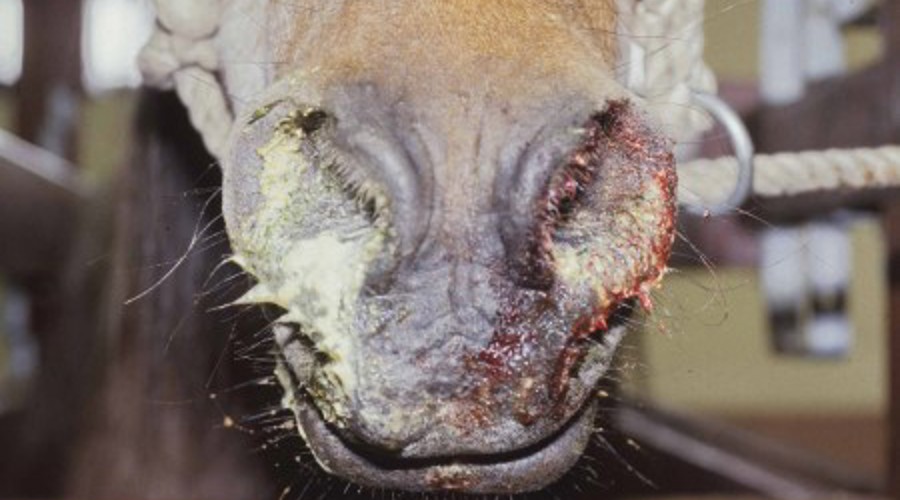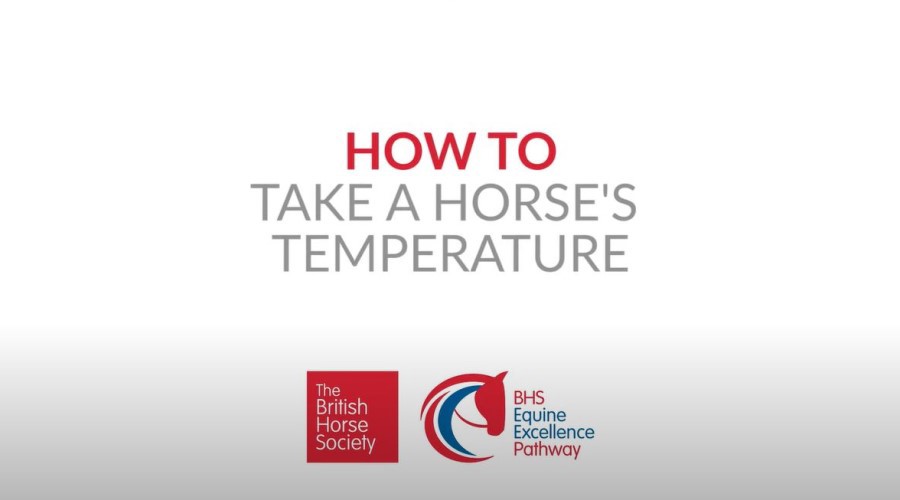What is strangles in horses?
Strangles is caused by a bacteria called Streptococcus equi. It’s so-called because the airway can become restricted by swollen lymph nodes.
How do horses get strangles?
While strangles is not spread through the air (airborne), the bacteria can spread when a horse coughs or snorts. It can be easily spread directly through horse-to-horse contact and indirectly, for example through contaminated equipment, handler clothing and boots.
Strangles bacteria can survive for up to six weeks in water which is why it is important to take your own water source when away from the yard.1

Strangles symptoms
Typical symptoms include:
- High temperature, above 38.5°C, is often the first sign. This provides an opportunity to immediately isolate the horse and help prevent the spread of the disease.
- Lethargy/dull and depressed.
- Loss of appetite and/or not drinking, difficulty swallowing.
- A lowered head and neck.
- A cough.
- Thick and discoloured nasal discharge.
- Swelling of the glands under the jaw (lymph nodes), in the space between the head and neck, or on the head or neck which may lead to abscesses. These can burst with highly infectious, thick, creamy-yellow pus.
- The abscesses in the lymph nodes usually burst into the horse’s guttural pouches (air pockets at the back of a horse’s throat) which then drain out through the nostrils.
It normally takes 3-21 days after the horse has been in contact with the strangles bacteria for signs to develop (incubation period)1,2. However, there have been times when it has taken up to 28 days.
If you suspect strangles
- Isolate the horse(s) affected.
- Call your vet.
- Contact owner(s) – including those of horses who have been in contact with the affected horse.
- Monitor other horses on your yard for signs of infection - including daily temperature checking. It can take up to 21 days for a newly infected horse to show signs of illness1,2.
- Spread the word, not the disease – tell people such as your farrier and any nearby equine property.
 play-circle
play-circle
Watch
How to take a horse’s temperature
Atypical strangles
Not all horses will show the same symptoms, or even any at all. This is called ‘atypical strangles’. Some horses may only show signs such as:
- A mild fever
- Other forms of nasal discharge
- A slight loss of appetite
Atypical strangles may go unnoticed but infection can still spread. If you notice your horse showing mild signs, it’s always sensible to isolate them as a precaution and contact your vet for advice.
Treatment
Recovery for your horse will mainly involve nursing and supportive care, which your vet can advise you on. Where multiple vet practices are involved (for instance, on a DIY livery yard) vets will often work together to put a plan in place for the whole yard and designate a lead vet to ensure clear communication.
Most horses recover from strangles in 3-4 weeks. It’s extremely important not to remove horses from isolation just because their symptoms have gone. Strangles bacteria can spread for around 6 weeks after signs of infection have gone, sometimes longer1.
Testing is the only way to ensure your horse is no longer infected and is safe to remove from isolation. Your vet will advise on when to test and what type of test to do.
Carriers
Infection can remain in around 10% of strangles cases1. This leads to a horse becoming known as a ‘carrier’; they’ve fully recovered from strangles and aren’t showing signs of infection but are still infected and able to spread the bacteria to others. You will not be able to determine whether your horse is a carrier by visibly looking yourself.
Treating carriers
Usually, the pus from abscesses dries and forms balls called chondroids, these will be identified by your vet through a guttural pouch endoscopy. Chondroids are removed from the guttural pouch and antibiotics may be required to kill any remaining bacteria. Horses are re-examined after two weeks to check if they are then free from infection.
Prevention & testing for strangles
Speak with your vet to arrange strangles testing for all new arrivals. This could be a guttural pouch endoscopy or a blood test depending on what your vet advises.
There is a strangles vaccine currently available for use in the UK which can help reduce the chance of a horse becoming infected or reduce the severity of symptoms they experience. The vaccine should be seen as an additional measure and not a replacement for good hygiene and disease prevention measures. Your vet will be able to advise whether the vaccine would be suitable for your horse and individual situation.
What’s it like dealing with a strangles outbreak?
Andrew Stennett, founder of BHS Approved Centre Grove House Stables shares his experience of strangles and why it is so important to speak out.
 play-circle
play-circle
Watch
Andrew Stennett shares his experience of strangles
The Surveillance of Equine Strangles
The Surveillance of Equine Strangles (SES) project aims to raise awareness of the disease. Veterinary laboratories across the UK report to SES when they have a positive diagnosis of strangles. These findings are published on their website, which identifies where outbreaks are occurring across the UK. This helps to encourage rigorous disease prevention and enables horse owners and vets to know when they are in, or travelling to, an area of higher risk, ultimately helping to reduce the spread.
Useful resources
References
chevron-down
chevron-up
1)Durham, A.E., Hall, Y.S., Kulp, L. and Underwood, C., 2018. A study of the environmental survival of Streptococcus equi subspecies equi. Equine veterinary journal, 50(6), pp.861-864.
2)McLinden, L. et al (2023) Advances in the understanding, detection and management of equine strangles. Equine Veterinary Journal. 35(12) P 662-672.
3)Fridberg, A. et al (2023) The hygienic aspects in the management of strangles. Equine Veterinary Journal. 35(10) P 540-550.
Downloadable Documents
chevron-down
chevron-up
The Strategy to eradicate and prevent Strangles (STEPS) downloadable leaflet gives more in-depth guidance if you suspect an outbreak.


